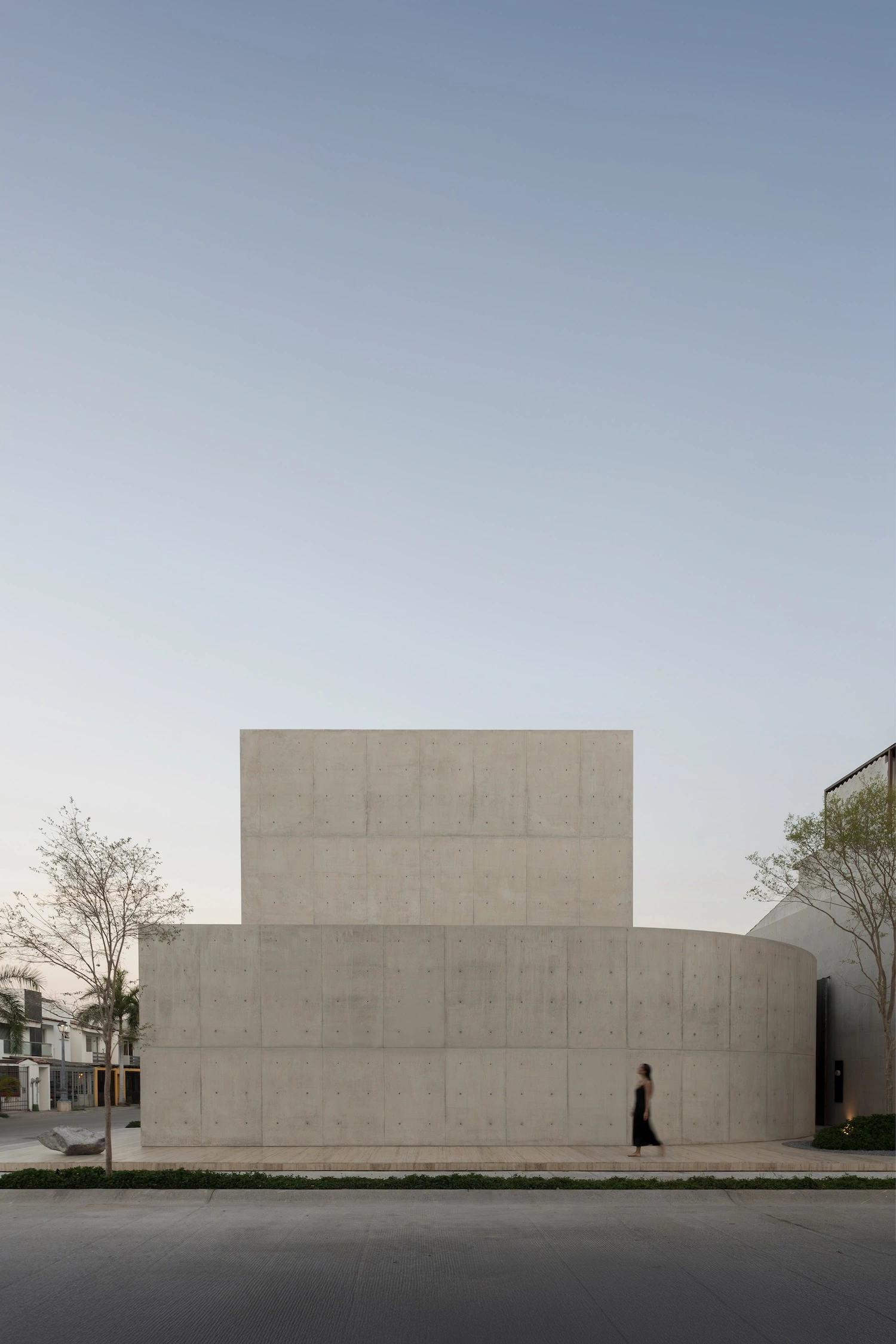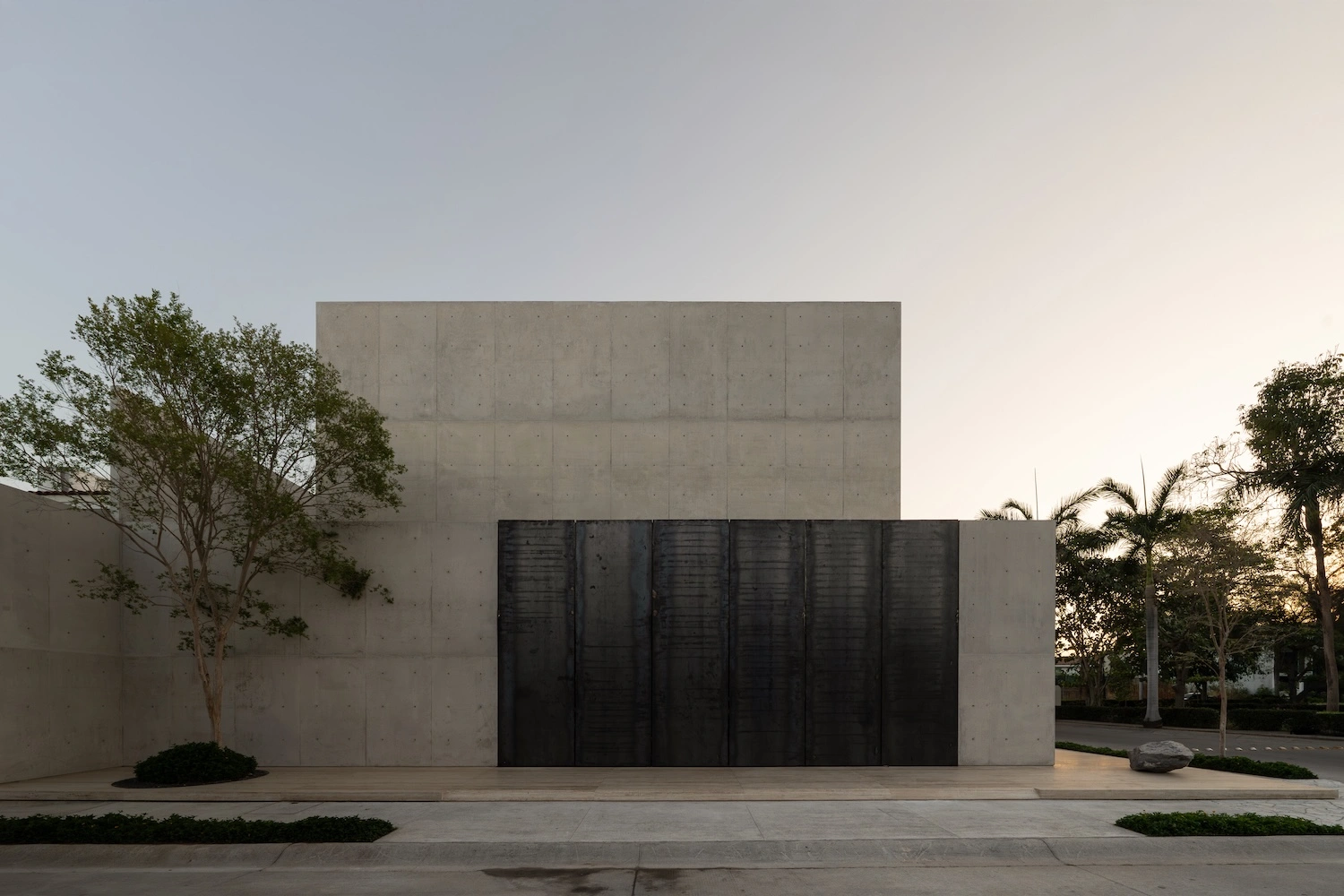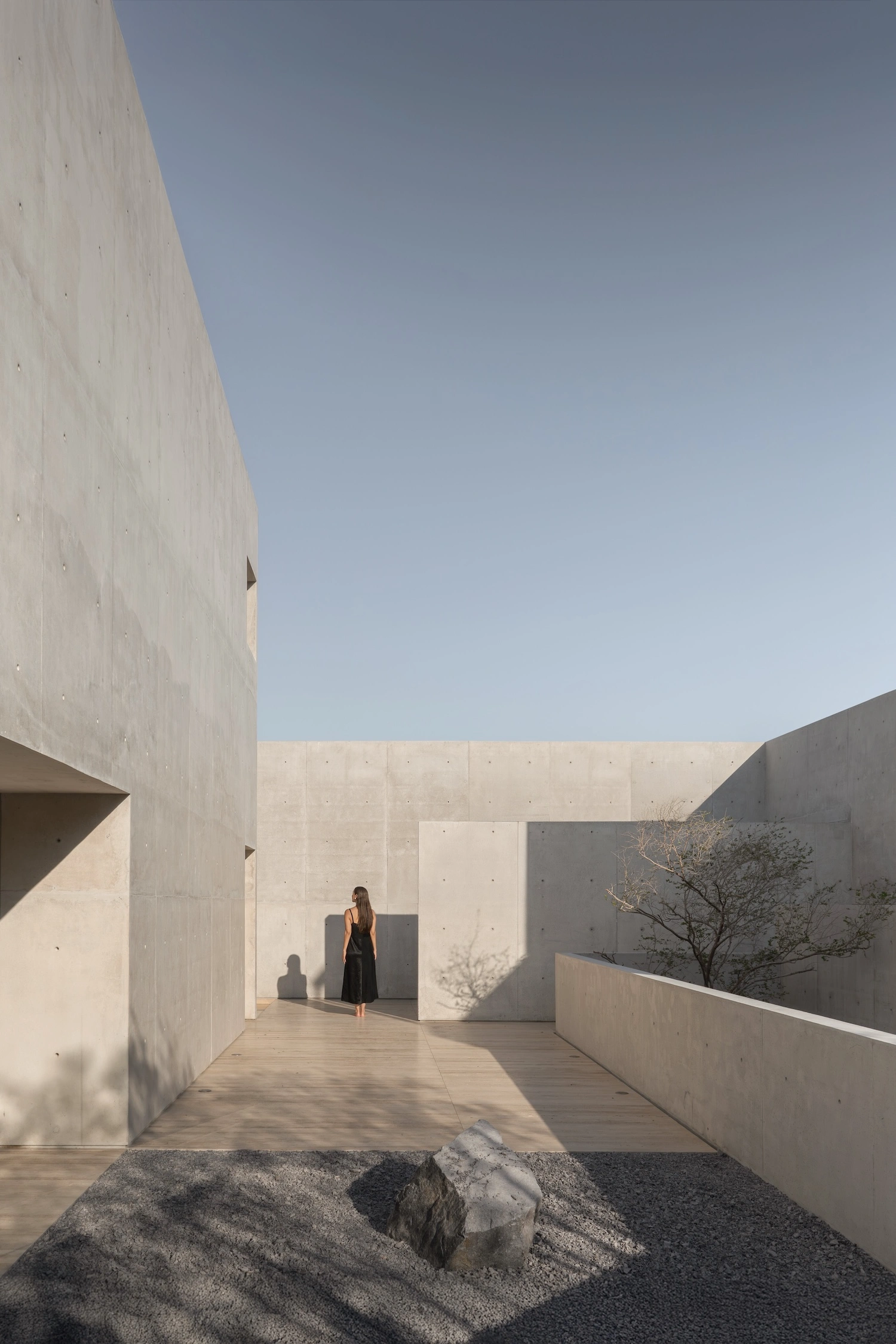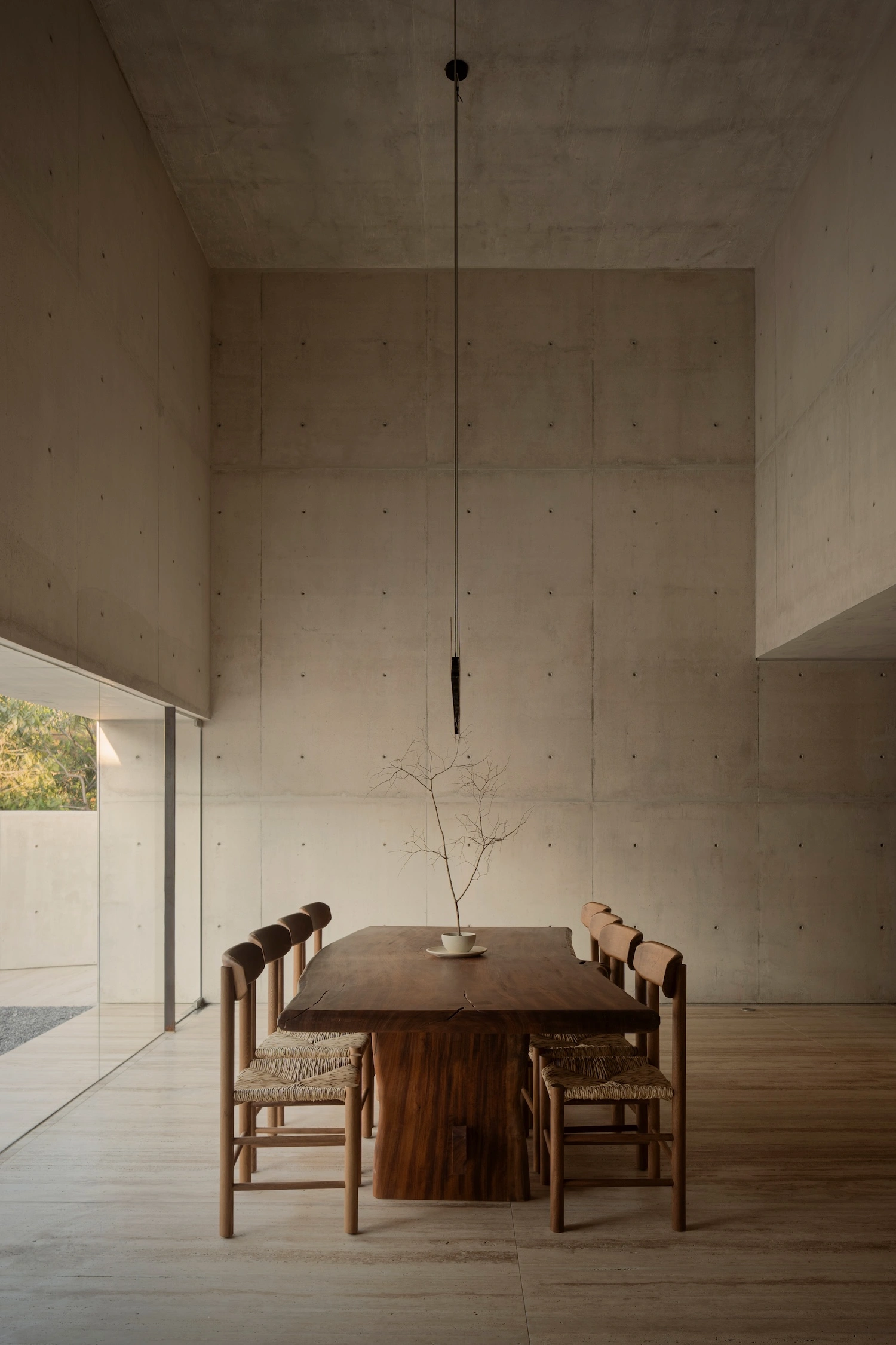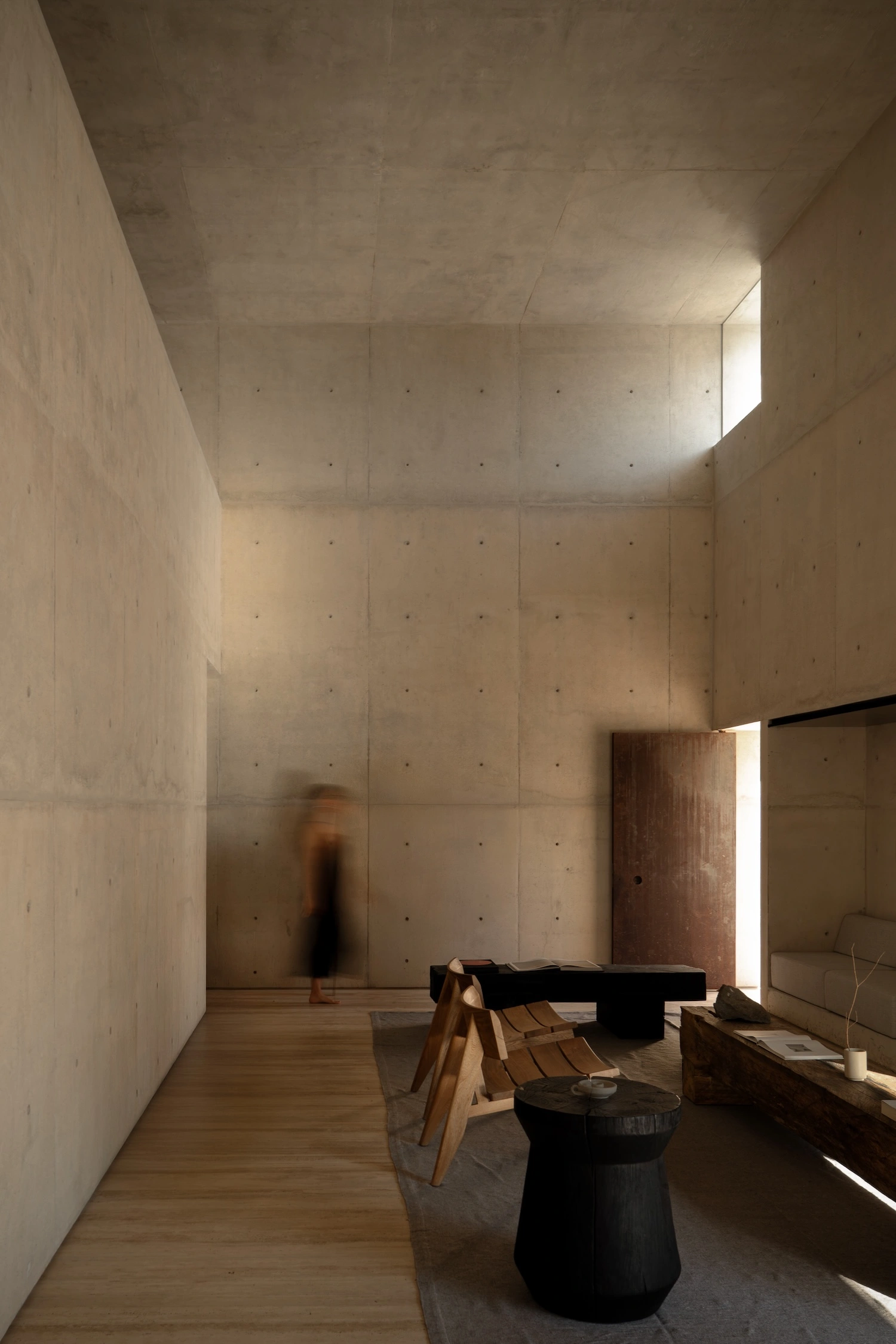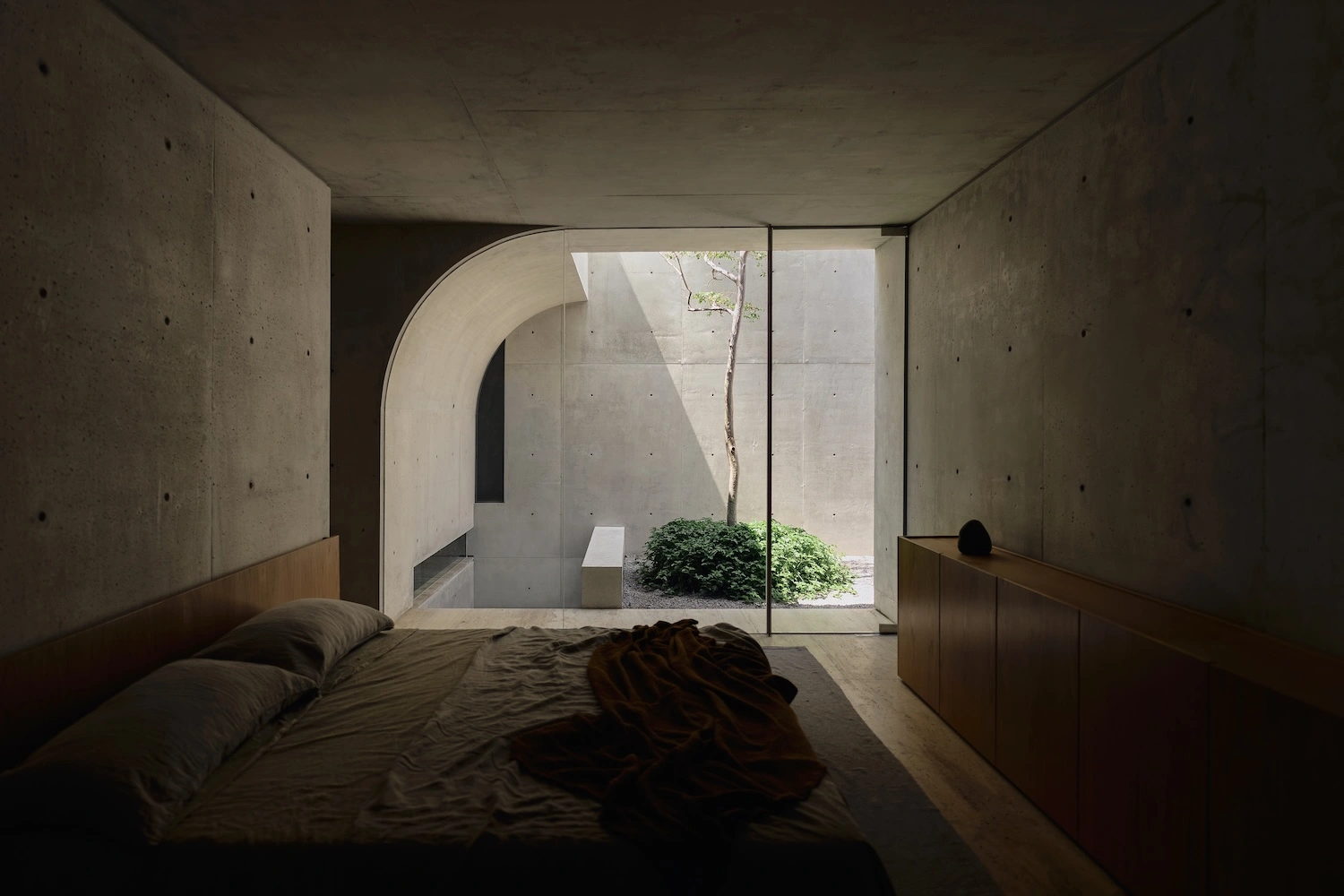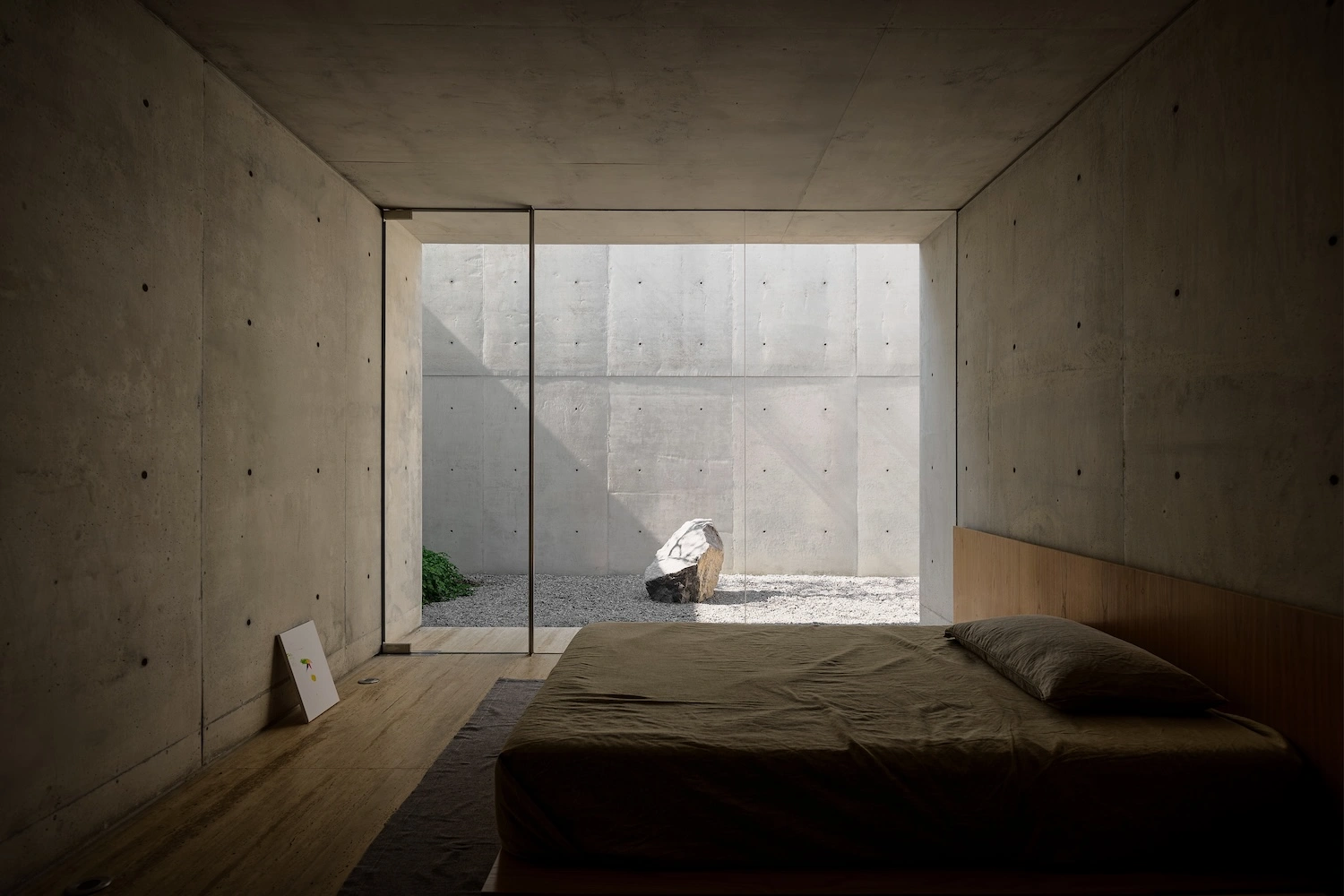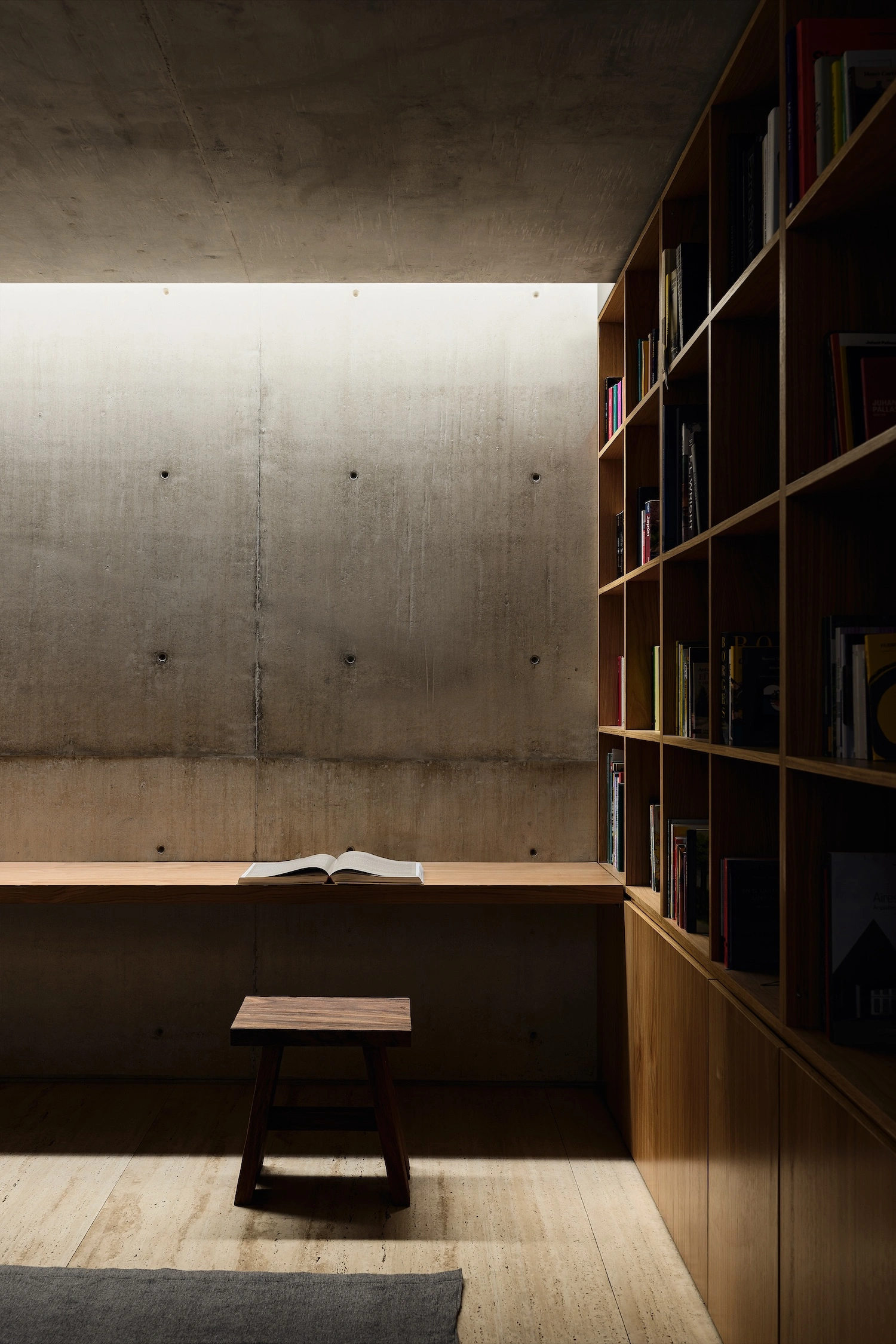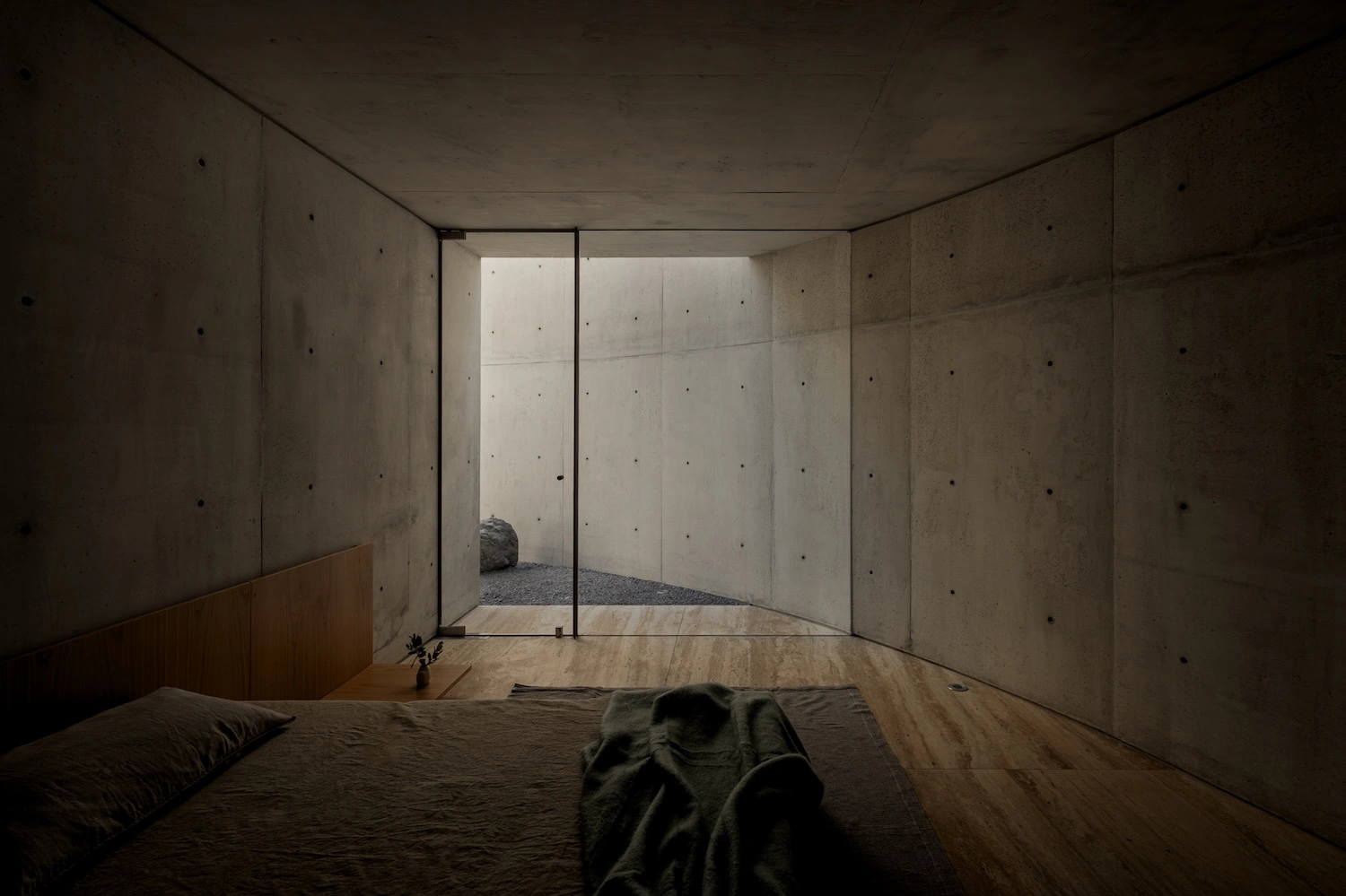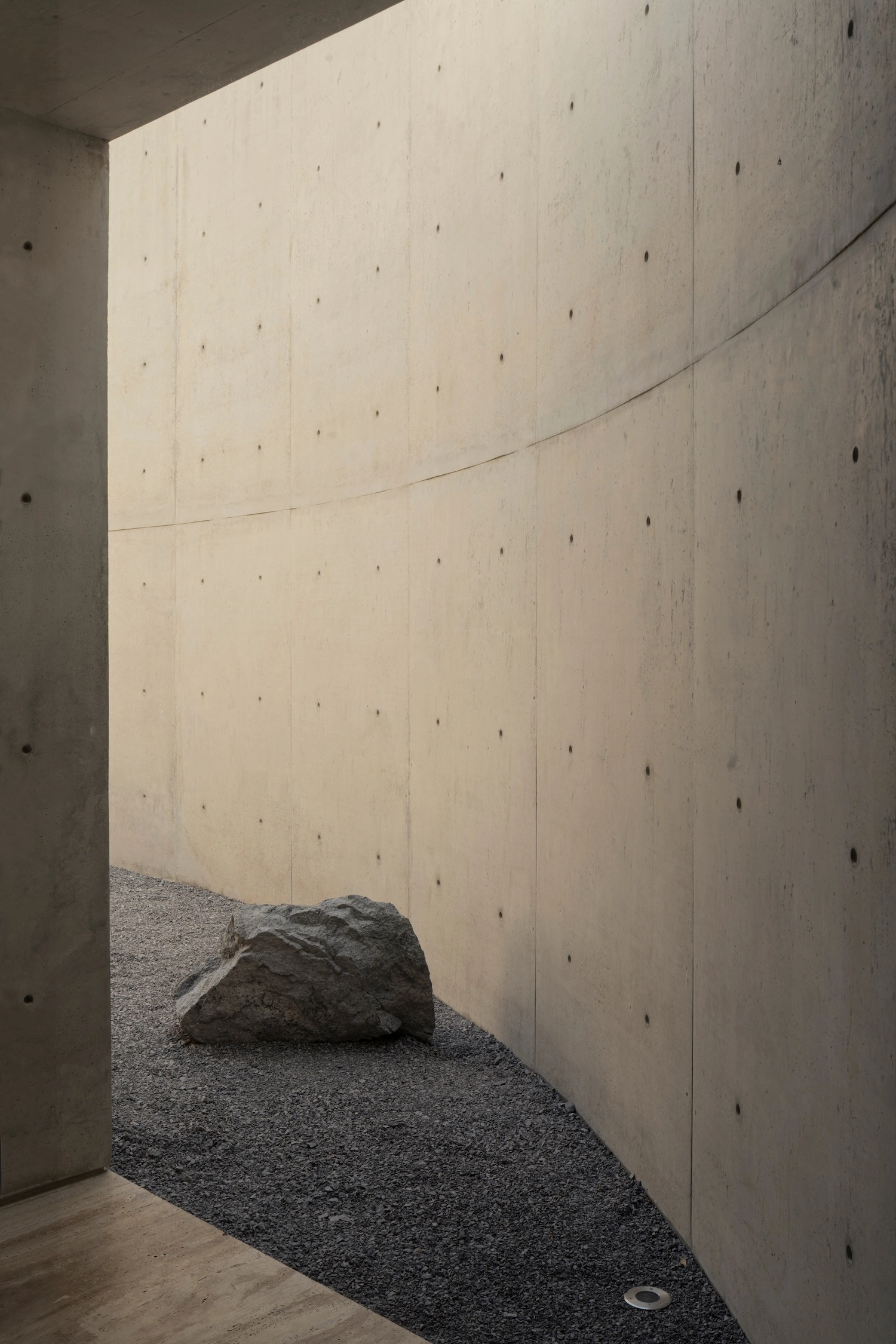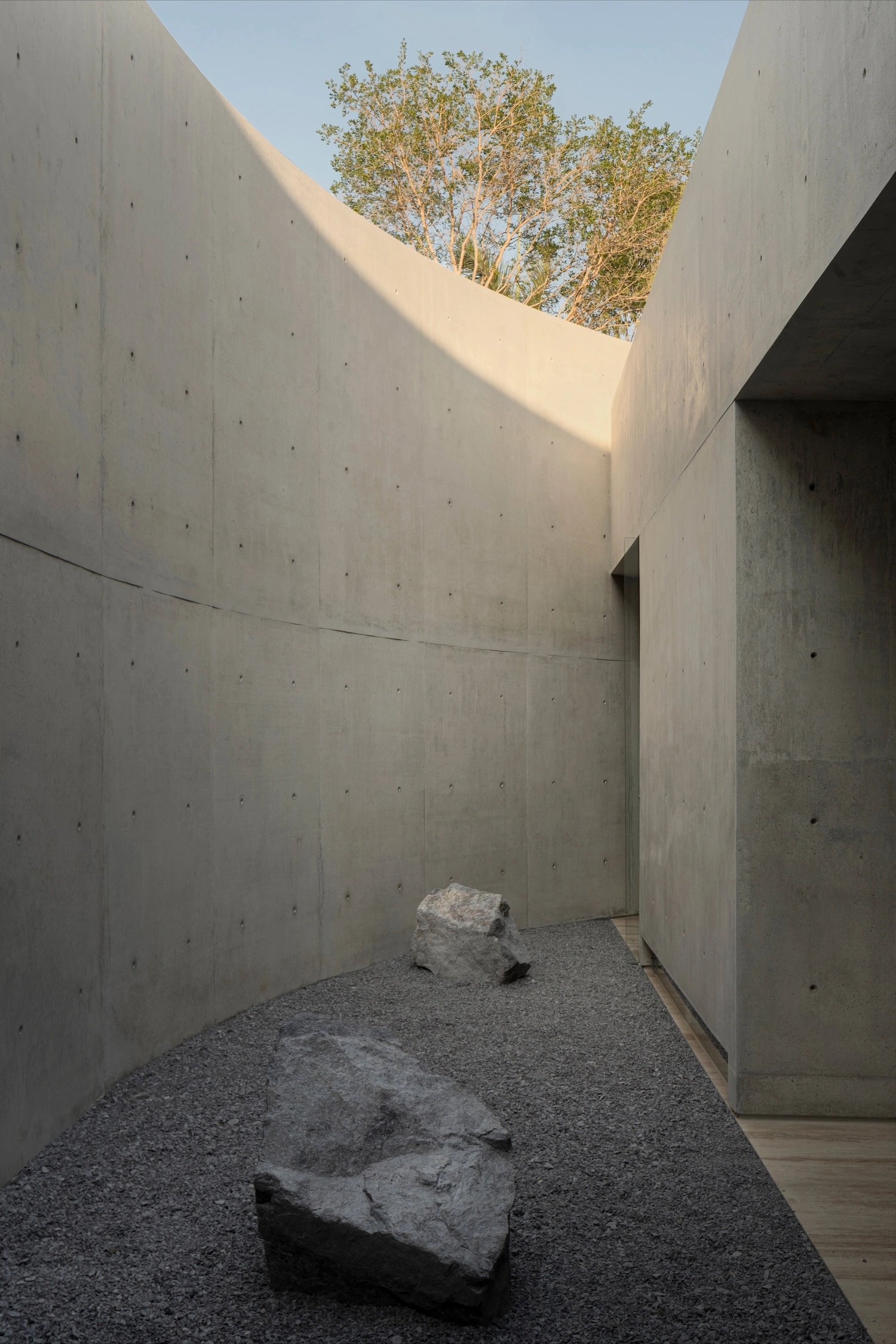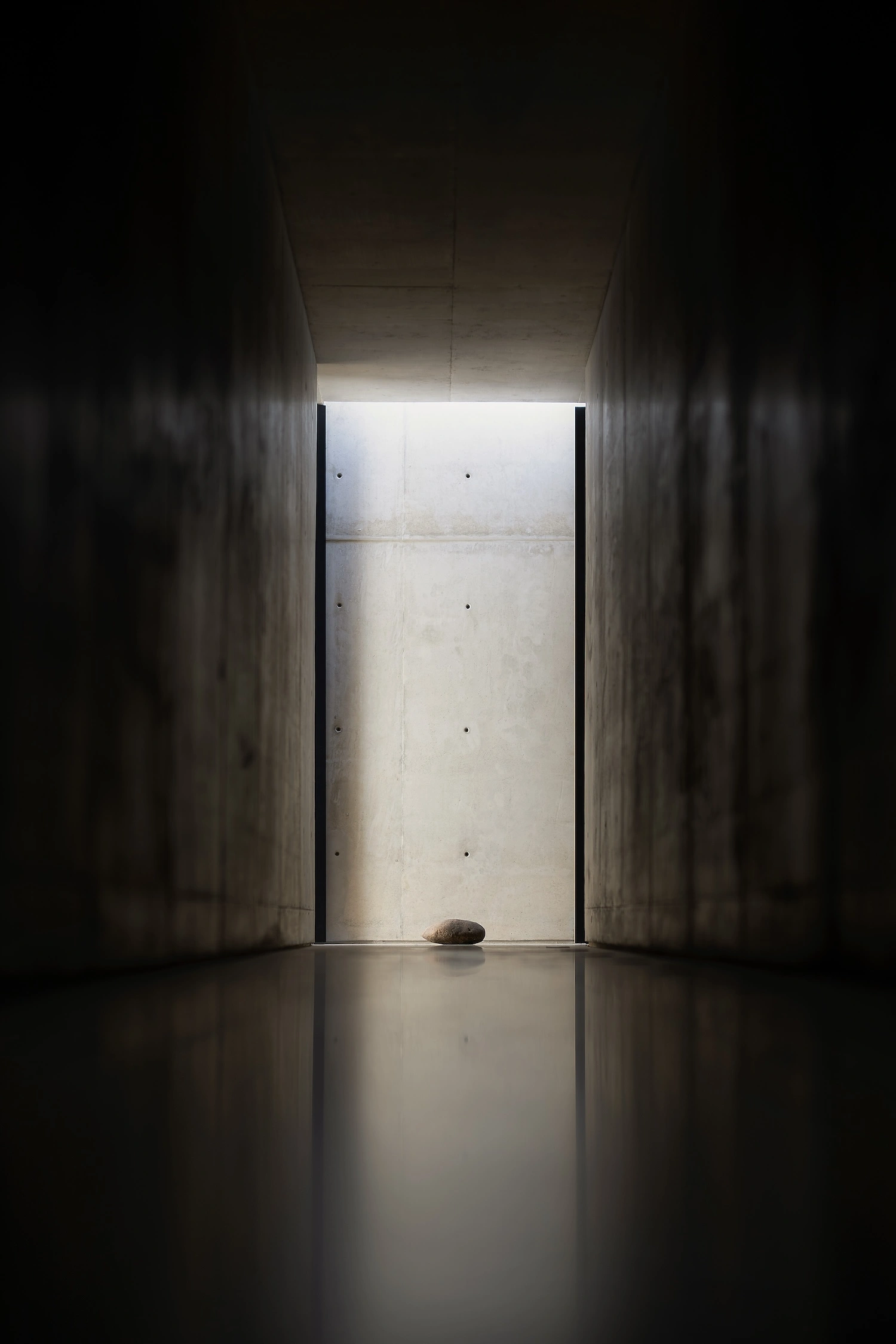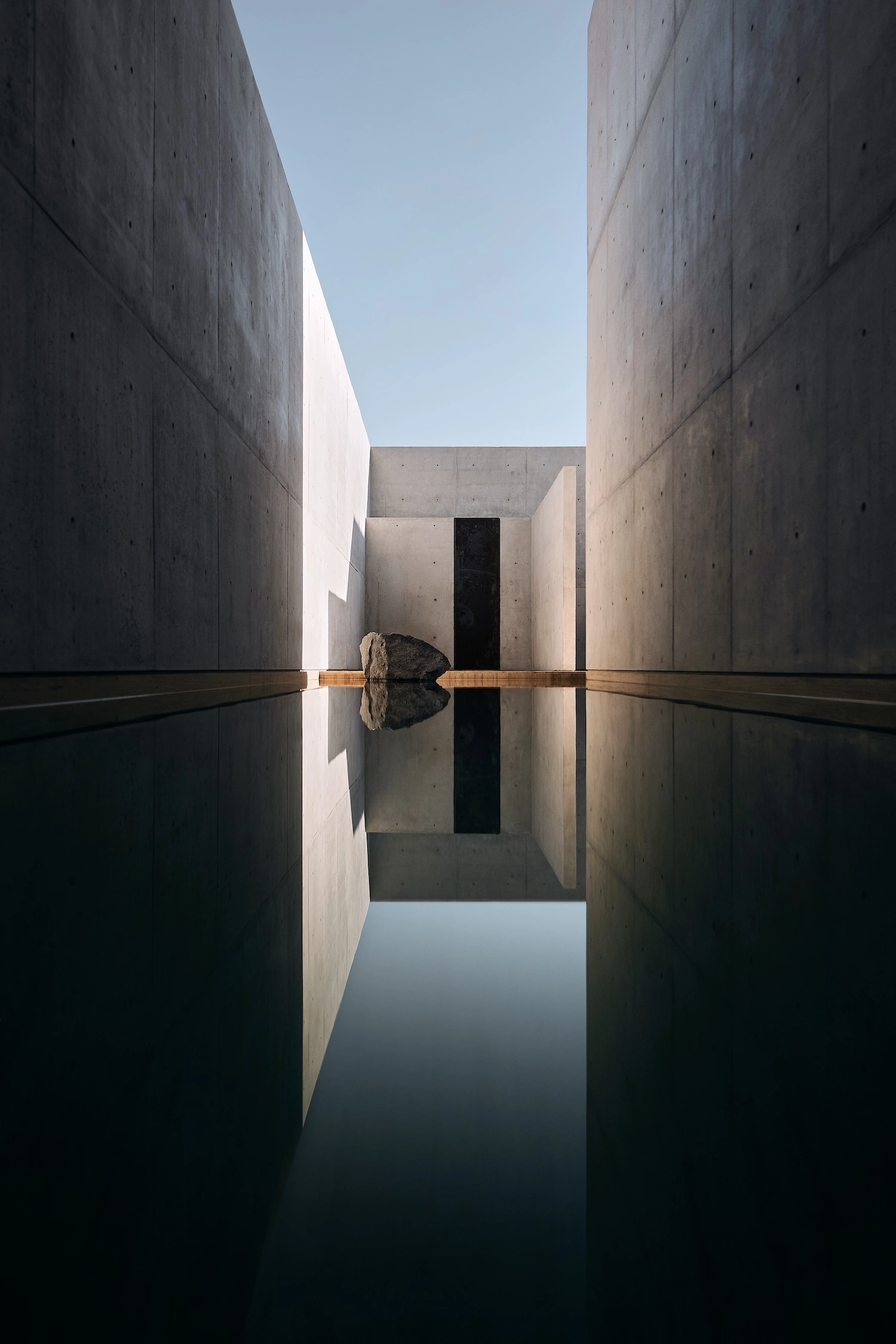Casa Tao by HW Studio redefines coastal living in Puerto Vallarta, Mexico by treating shade as spatial material, crafting a cool, introspective haven amidst the city’s tropical intensity.
Eschewing spectacle in favor of a tempered, atmospheric rigor, the project frames shade not as the absence of light but as a climatic presence in itself. Designed with a studied restraint, the residence orchestrates microclimate, shadow, and airflow to create an introspective haven within the dense urban fabric. “We treated shade not as absence of light but as a lived climate,” says architect Rogelio Vallejo Bores, encapsulating the ethos behind a home that breathes rather than performs.
Casa Tao unfolds as two volumes: a dense, ground-hugging plinth that houses bedrooms around a central courtyard, and a light, elevated pavilion for social life that hovers above. This vertical disjunction is both strategic and sensory. The lower volume offers seclusion and thermal inertia, while the upper volume seeks breezes and filtered light from a nearby tree-lined plaza. The project deliberately avoids frontal exposures, opting instead for angled apertures, thick thresholds, and deep shadows that mediate between the inner and the outer.
Rather than engage the street, the house cultivates inwardness. The entrance sequence—articulated through a curved wall and a planted threshold—evades direct lines of sight. Circulation is choreographed to amplify moments of compression and release, brightness and dimness, enclosure and breeze. Even outdoor rooms operate as buffered interstices, not as theatrical extensions of the interior. This is domesticity reimagined through penumbra, not panorama.
Spatially, the house is a study in calibration. The compact lower level—comprising bedrooms, services, and a garage—clusters around a courtyard that provides both visual calm and evaporative cooling. Above, the living spaces unfold in double-height volumes with shaded terraces that hover in the canopy line. These platforms act as suspended verandas, admitting wind and indirect light while remaining shielded from the high-angle sun. The result is a vertical gradient of climate and use, where each floor negotiates its own environmental terms.
Materially, Casa Tao privileges tactile performance over ostentation. Exposed concrete and whitewashed surfaces form a palette that moderates temperature and refracts light without glare. The concrete’s mass anchors thermal inertia, while its matte surface captures the chiaroscuro of shifting daylight. Passive strategies dominate: no broad swathes of glass, no brash mechanical interventions—just a careful orchestration of porosity, depth, and reflectivity. Shade, here, is not a fallback. It is the architecture.
In a coastal town where architecture often plays to the horizon, Casa Tao offers a counterpoint—an architecture of slowness, of shelter, of lived shadow. It resists the visual and thermal excess of the tropics with a language of restraint and intelligence, creating spaces that invite lingering, not just looking.


